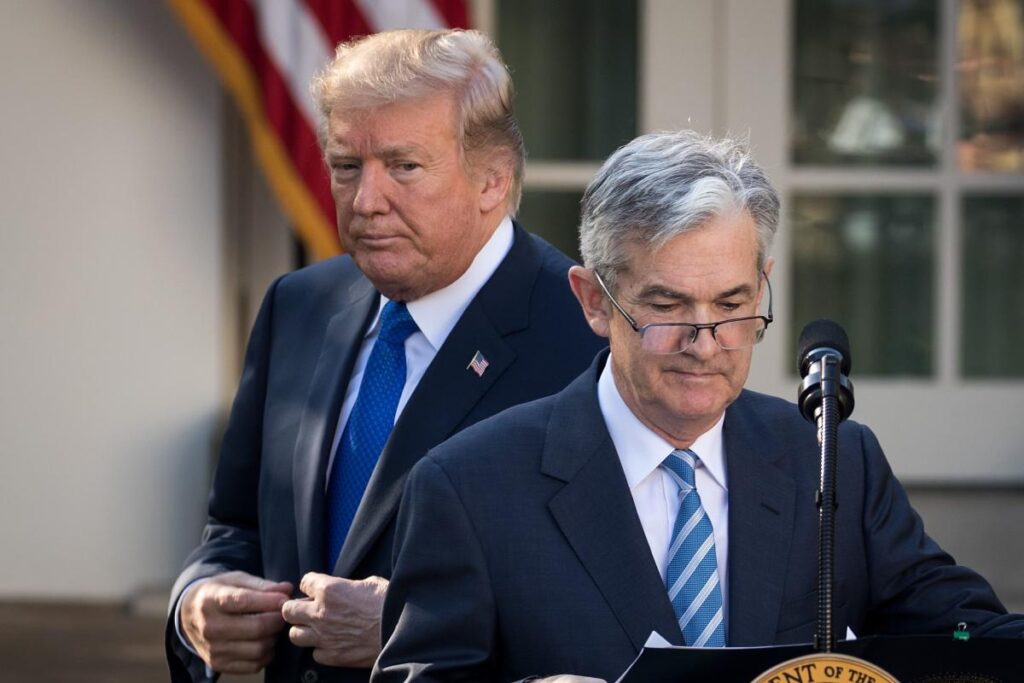Donald Trump’s recent victory in the presidential election introduces significant uncertainty into the U.S. economic landscape, which may compel the Federal Reserve to reconsider its policy approach in the months to come. This uncertainty stems not only from Trump’s proposed economic policies but also from potential political pressure on the Federal Reserve during his second term in office. Trump’s campaign promises included a more aggressive stance on tariffs, the deportation of millions of undocumented immigrants, and an extension of the tax cuts enacted in 2017. Economists warn that the implementation of these policies might lead to upward pressures on prices, wages, and the federal deficit, complicating the Fed’s mission to manage inflation while preserving the labor market. Consequently, a politically charged environment could prompt the Fed to tread carefully as it navigates the challenges of its dual mandate amidst the unfolding economic situation.
As the Federal Reserve prepares for its meeting, expectations are high for a quarter-percentage-point cut in the benchmark interest rate, continuing a pattern initiated in September. Projections suggest that the Fed anticipates one additional cut within the year and further reductions in 2025. However, following Trump’s election, policymakers are likely to adopt a more cautious approach regarding the timing and magnitude of these cuts. Economists like Derek Tang indicate that the Fed might now consider the risk of inflation spiking due to Trump’s tariffs and immigration policies. This cautious stance means that officials may prefer slower rate cuts to allow more time for observing how inflation trends and the labor market evolve in response to any new policies.
Fed Chair Jerome Powell will undoubtedly face inquiries about how Trump’s election influences the Fed’s outlook during a press conference following the committee meeting. Trump’s previous criticisms of Powell during his first term have created a charged atmosphere surrounding the central bank, which could be exacerbated if he resumes attacking Powell’s decisions. Trump’s comments, suggesting a belief that presidents should have a say in the Fed’s interest-rate policies, have raised concerns about potential threats to the Fed’s independence. While he may clarify that he does not intend to issue direct orders to the Fed, the tone of his rhetoric could still generate speculation about his intentions regarding monetary policy oversight.
The independence of the Federal Reserve is bolstered by various structural safeguards, including the requirement for Senate confirmation of the president’s Fed appointees. However, this independence can be undermined by a president’s persistent public criticism, creating an environment of doubt about the Fed’s commitment to its stated objectives. Scholars like Sarah Binder highlight that regardless of structural independence, if significant public skepticism develops about the Fed’s ability to remain apolitical, it could adversely affect its credibility. Some of Trump’s closest advisers have attempted to temper concerns about his potential interference with the Fed, asserting that he values central bank independence because it plays a crucial role in managing long-term inflation expectations.
Trump’s ability to shape the future course of the Federal Reserve will be substantially through his appointments, as he has expressed intentions not to reappoint Powell when his term expires in May 2026. Additionally, there will be opportunities to appoint new governors, which could tilt the balance of power within the Fed. The potential for influence over the Fed’s regulatory posture is also significant. With the recent resignation trend of officials in key positions following a party transition in the presidency, there could be swift changes to regulatory policies related to large banks if Trump opts for appointments aligned with his administration’s economic philosophy. Former advisers and analysts, including Michael Feroli of JPMorgan Chase, note that effects of Trump’s victory could extend beyond immediate monetary policy changes as he seeks to appoint individuals who mirror his fiscal priorities.
As Trump’s new administration takes shape, the overarching economic strategy and its implications for the Federal Reserve remain in focus. The interplay between Trump’s policy proposals and the Fed’s monetary policy will be crucial as the central bank seeks to maintain stability amidst rising inflation concerns and external pressures. Both Trump and his advisers recognize the importance of Fed independence in anchoring long-term economic expectations; therefore, they may avoid overt interference while still expressing a desire for certain outcomes. The evolving dynamics between the presidency and the central bank will play a pivotal role in shaping not only policy decisions but also the broader economic outlook for years to come. Observers will be watching closely to see how Trump’s administration balances audacious economic strategies with the necessity of sustaining the credibility and independence of the Federal Reserve.

